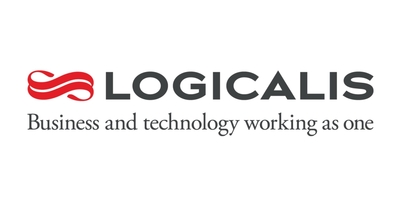

NEW YORK, Jan. 23, 2018 /PRNewswire/ -- The number of clinical images captured and stored each year throughout America's healthcare system is staggering: An estimated 36 million MRIs and 74 million CT scans were performed in the United States in 2017 alone, and that just scratches the surface.1 Consider too the myriad of wound care and other visual condition assessments taken with smartphones, digital images acquired from surgical scopes, cardiology images, and even point-of-care ultrasounds captured annually, and it's easy to see why enterprise imaging strategies are top-of-mind for today's healthcare organizations. Intuitive access to this growing number of clinical images is already playing an increasingly important role in electronic health record (EHR) optimization strategies and value-based clinical practices. But, according to Logicalis Healthcare Solutions, the healthcare-focused arm of Logicalis US, an international IT solutions and managed services provider (www.us.logicalis.com), as new technologies ranging from deep machine learning to the first FDA-approved digital pathology interpretation software come to market, the capture, storage and management of discrete clinical images is quite literally expected to explode.

"Developing an enterprise imaging strategy and then marrying that strategy to an EHR optimization program is just the beginning of healthcare's digital transformation. But even when you have the most sophisticated EHR solution in place and have married patients' digital images to their electronic health records, your transformation journey is not complete," warns Kim Garriott, Principal Consultant, Logicalis Healthcare Solutions. "New technologies – things like deep machine learning and digital pathology – that are already visible on the horizon will require your organization to be much more 'digitally mature.' Yet, despite the complexity involved in preparing to take full advantage of these emerging capabilities, the payoff in better patient outcomes and, ultimately, better value for the organization and patient alike, will make the journey worthwhile."
Emphasizing the importance of clinical imaging in health IT, HIMSS Analytics and the European Society of Radiology (ESR) jointly developed the Digital Imaging Adoption Model (DIAM), a multi-stage imaging IT maturity model first introduced at the 29th European Congress of Radiology in Vienna in 2016. Slated for introduction in the U.S. market at HIMSS18, the DIAM helps healthcare organizations visualize what "digital imaging maturity" looks like and understand the considerations needed to attain it.
Further highlighting the importance of clinical imaging, in the newly updated version of DIAM's predecessor, the Electronic Medical Record Adoption Model (EMRAM), the requirement for the adoption of digital imaging has been promoted from a Stage 5 requirement to Stage 1.
Five Steps for Better Image Management
All of this means healthcare CIOs must continue to prepare for the coming wave of image-related data and its intelligent use. To help, the experts at Logicalis Healthcare Solutions have put together a series of five important tips.
Need help designing your organization's digital health strategy? Schedule a HIMSS18 meeting with Logicalis Healthcare Solutions experts now and gain instant access to a series of valuable healthcare IT reports: http://ow.ly/CaMF30hNxqE.
1 IMV: 2017 MR Market Outlook Report & IMV: 2017 CT Market Outlook Report
Want to Learn More?
About Logicalis
Logicalis is an international multi-skilled solution provider providing digital enablement services to help customers harness digital technology and innovative services to deliver powerful business outcomes.
Our customers span industries and geographical regions; our focus is to engage in the dynamics of our customers' vertical markets including financial services, TMT (telecommunications, media and technology), education, healthcare, retail, government, manufacturing and professional services, and to apply the skills of our 4,500 employees in modernizing key digital pillars, data center and cloud services, security and network infrastructure, workspace communications and collaboration, data and information strategies, and IT operation modernization.
We are the advocates for our customers for some of the world's leading technology companies including Cisco, HPE, IBM, NetApp, Microsoft, VMware and ServiceNow.
The Logicalis Group has annualized revenues of over $1.5 billion from operations in Europe, North America, Latin America, Asia Pacific and Africa. It is a division of Datatec Limited, listed on the Johannesburg Stock Exchange, with revenues of over $4 billion.
For more information, visit www.us.logicalis.com.
Business and technology working as one
To learn more about Logicalis activities through a variety of social media outlets, click here.
Media Contacts:
Karen Franse, Communication Strategy Group for Logicalis US
kfranse@gocsg.com
866-997-2424 x222
www.gocsg.com
Arthur Germain, Communication Strategy Group for Logicalis US
agermain@gocsg.com
866-997-2424 x101
www.gocsg.com
SOURCE Logicalis US